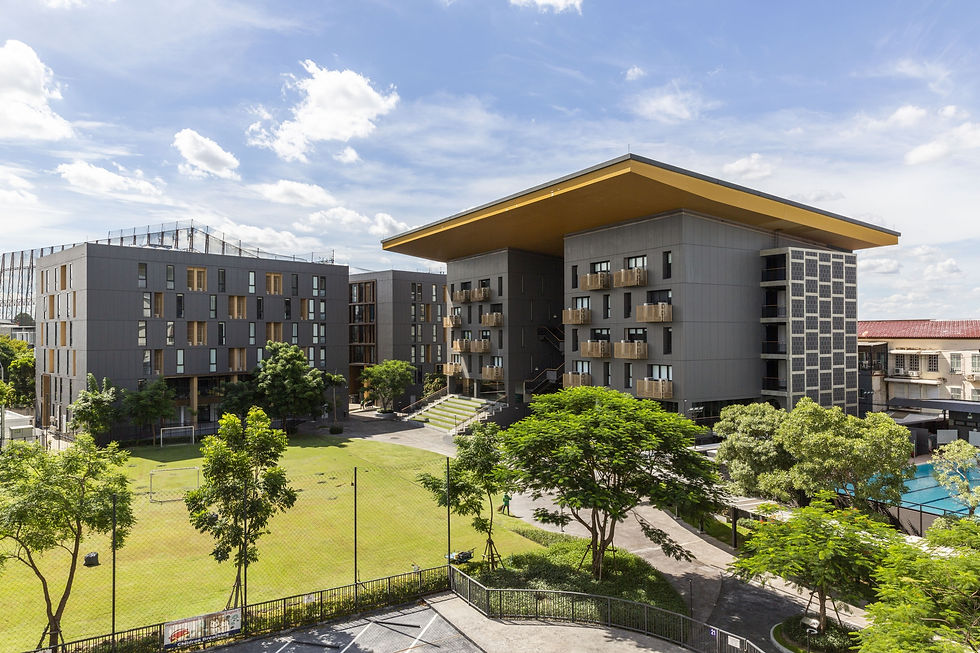Increasing Flight Connectivity to Grow Russian and Chinese Tourism
- World Auction
- Jul 28, 2023
- 3 min read
Thailand’s tourism sector is gearing up for a significant rebound. The Tourism Authority of Thailand (TAT) is setting ambitious targets, focusing on two key markets: Russia and China. The strategy involves increasing flight connectivity and leveraging Thailand’s appeal as a friendly and neutral destination.
Targeting the Russian Market
Eyeing a record-breaking influx of 2 million Russian tourists next year, the Tourism Authority of Thailand (TAT) intensifies its efforts, buoyed by an escalation in flight frequency and Thailand’s impartial position in the ongoing Russia-Ukraine conflict.
Khanittha Phanworawat, the director of TAT’s Moscow office, believes that Thailand’s friendly image among Russian travelers could play a critical role in reaching this ambitious objective, especially if the existing sanctions against Russia persist.
Traditionally, Russian tourists have favored European destinations for their summer vacations. However, the geopolitical situation has seen a shift in this trend, transforming Thailand into a year-round hotspot, not merely a high-season escape, according to Ms. Khanittha.
This positions Thailand as a top choice for Russian tourists, a demographic known for their high spending habits and longer stays.
Thailand has already welcomed north of 840,000 Russian tourists since the start of the year, placing it among the top five favored nations. Ms. Khanittha anticipates that these figures could swell to 1.3 million, possibly even rivaling the 1.48 million achieved in 2019.
A resurgence in flights between Thailand and Europe, including Russia, has been seen, reaching approximately 70% of the 2019 level during the current warm season. TAT Deputy Governor for Europe, Africa, the Middle East, and the Americas, Siripakorn Cheawsamoot, projects a further rise in the upcoming high (cool) season.
Data from Russia’s Federal Border Guard Service and Thailand’s Immigration Bureau shows that Thailand held a top-five position among outbound destinations for Russian tourists, with 435,000 arrivals in 2022. Other countries with significant Russian tourist footprints included Turkey, the United Arab Emirates, and Egypt, garnering around 3.7 million, 900,000, and 760,000 visitors, respectively.
However, the road to the 2 million mark is not without challenges. Russian airlines are currently unable to meet the demand for direct flights due to capacity constraints. Moreover, economic sanctions against Russia have led to complications in aviation insurance for Russian aircraft, hindering airlines’ expansion plans, Ms. Khanittha explains. Thai airlines, with their preference for short-haul flights, are ill-equipped to fill this void.
To navigate these obstacles, TAT will focus on driving tourism demand through new segments. A broader market base would motivate more airlines to introduce routes between Thailand and Russia. Key segments identified include beach-loving leisure travelers, adventure enthusiasts, health and wellness seekers, and honeymooners.
While awaiting an increase in direct flights, TAT will continue promoting Thai tourism via connecting flights, leveraging the Middle East as a crucial aviation hub.
Ramping Up Flights to China
Low-cost carriers are escalating flight frequencies to China, although their capacity continues to trail pre-pandemic levels. Concurrently, the Tourism Authority of Thailand (TAT) remains hesitant to employ a visa fee waiver scheme as a strategy to draw more foreign tourists.
Despite an early-than-anticipated lifting of border restrictions this year, the tourism industry is projected to recuperate to less than 50% of its peak in 2019, which saw approximately 10 million tourists. The TAT governor, Yuthasak Supasorn, attributes this partially to the sluggish Chinese economy and partially to the slow resumption of flights.
Airlines have faced hurdles in expanding their services due to supply-side shortages, such as aircraft and maintenance facilities. However, a surge in airline services is anticipated by October, aligning with China’s “Golden Week” holiday.
Beginning August 15, Thai Lion Air is set to introduce six new routes to Guangzhou, Chengdu, Hangzhou, Shanghai, Shenzhen, and Xi’an, utilizing their Boeing 737–800 and Boeing 737-900ER aircraft. Currently, the airline boasts a fleet of 15 aircraft, comprising 13 B737-800s and two B737-900ERs.
Thai AirAsia reported an 80% average load factor on Chinese routes during the first half of the year, operating 13 routes to 12 different destinations in China. The airline’s resumption of China routes stands at 70% of the pre-Covid level, with hopes of full recovery in terms of destinations and frequencies by year-end.
Presently, most unrecovered routes originate from regional hubs in Thailand, such as Phuket, Krabi, Chiang Rai, and U-Tapao in Chon Buri. Only Chiang Mai currently offers direct flights to Beijing and Hangzhou. However, new destinations in China may be added, subject to market potential.
Conclusion
Thailand’s tourism sector is on the path to recovery, with a strategic focus on the Russian and Chinese markets. The challenges are significant, but so are the opportunities. As airlines ramp up their services and TAT continues to promote Thailand’s appeal, the country is poised to welcome a surge of international visitors in the coming months. That bodes well for Thailand’s real estate market as investors can expect higher returns.







Comments